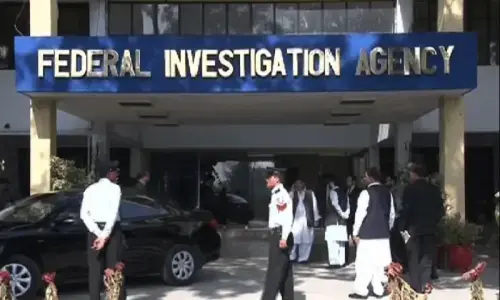Every December, thick fog descends upon Lahore, blocking out the winter sunshine, closing off the motorway after dusk and preventing flights from landing at the international airport at night.
The problem has grown worse over the last five years due to the high levels of pollution and poor air quality in the city, created by increasing vehicular and industrial emissions. Even during the summer months, there is now a permanent haze hanging over the city that is only relieved when it rains and the pollution is washed away for a short while.
Air pollution is an issue that needs to be urgently addressed as Lahore is now considered amongst the most polluted cities in Asia. In the winter months, with delayed rainfall, the cold and continuously dry conditions concentrate all the pollutants in the lower levels of the atmosphere, causing the smog to spread all over the Punjab.
“After a month of thick fog or rather smog, we finally saw some sunshine last week after some light rain came down the night before,” explains a resident of the Lahore Canal area. “We are so sick of the cold and damp that comes with the smog each year.” The foggy conditions also lower the daytime temperatures since there is little sunshine to warm up the day.
According to Dr Qamar uz Zaman Chaudhry, national climate change expert and former Director General of Pakistan’s Meteorological Department, “The main source of the pollutants in our lower atmosphere is Eastern Punjab where all the coal based industries are centered (across the border in India). Of course, we have added our share of the pollutants as well from factory and car emissions.”
In places near irrigation canals, rice paddies and rivers where there is more moisture available, the fog gets even thicker. The smog only gets cleared when it rains, washing away the lower layers of the atmosphere where all the harmful gases and other pollutants are trapped near the ground.

Lahore, along with New Delhi, has recently been listed amongst the top 10 worst cities for smog in 2014 according to the Deutche Welle website. Until industries on both sides of the border start cleaning up their emissions and people start using more fuel-efficient transportation, people will just have to avoid going outdoors or wear masks as they do in the heavily polluted cities of China in Beijing. Breathing in all these trapped pollutants (dust and harmful substances like sulphur dioxide, nitrogen dioxide and carbon monoxide) is not exactly healthy. Industrial smog can in fact create major health risks, including asthma, lung tissue damage, bronchial infections and heart problems.
Last month, the Government of the Punjab submitted a report to the Supreme Court of Pakistan on the steps taken to curtail pollution in the province. According to the report, there has been a great increase in the number of vehicles in Lahore during the recent past, which has resulted in worsening air quality.
The report also pointed out that there is now a complete ban on the issuance of registration and route permit of two stroke engine rickshaws (introduced in 2005) and the process of conversion or replacement of existing 2-stroke rickshaws into 4-stroke rickshaws has been initiated. However, many of the motor vehicles plying the city roads have old engines that guzzle petrol and diesel and spew out poisonous fumes and there is a need for stricter laws on banning these vehicles.
In Delhi, which is also blanketed by smog throughout the winter months, the well-known environmental NGO, the Centre for Science and Environment (CSE) is urging the government of India to acknowledge the air pollution problem and put in place pollution emergency action for smog episodes. According the to the CSE, “What matters most from the public health perspective is the daily dose of toxins that people breathe. If urgent steps are not taken to bring pollution levels down to meet clean air standards, it will lead to a public health disaster.”

The CSE uses state-of-the-art portable air quality monitoring equipment to track how much pollution an individual is exposed to in Delhi while doing their daily chores. This dust track aerosol monitor measures both mass and size fraction of the particulate matter. According to Sunita Narain, the head of the CSE, “Our data is quite shocking – we have found that daily personal exposure to toxic air is significantly higher than the background ambient air pollution that is monitored by the Delhi Pollution Control Committee. This is a serious risk to public health.”
The CSE wants their government to implement an air quality index with health advisory and pollution emergency measures. They would also like to see nation-wide Euro IV in place by 2015 (India has stricter laws on cars then Pakistan). They would also like to control dieselisation with tax measures to cut deadly toxic particles and scale up public transport. Lastly they would like the government to restrain the growth of cars with parking restraints and taxes in the city and implement priority action for power plants, open burning, generator sets and construction.
Lahore could do well to take a leaf out of Delhi's book and perhaps initiate a programme similar to that of the CSE, albeit on a government level.
According to the Health Effects Institute, the damage from the poor air quality ranges is not just limited to public health. Heritage (nitric sulfuric acid erosion), natural resources and agriculture are also greatly effected.
There is a need for a comprehensive action plan to address worsening levels of pollution not only in Lahore but throughout the country in which NGOs and the media will have to play a pivotal role.




































